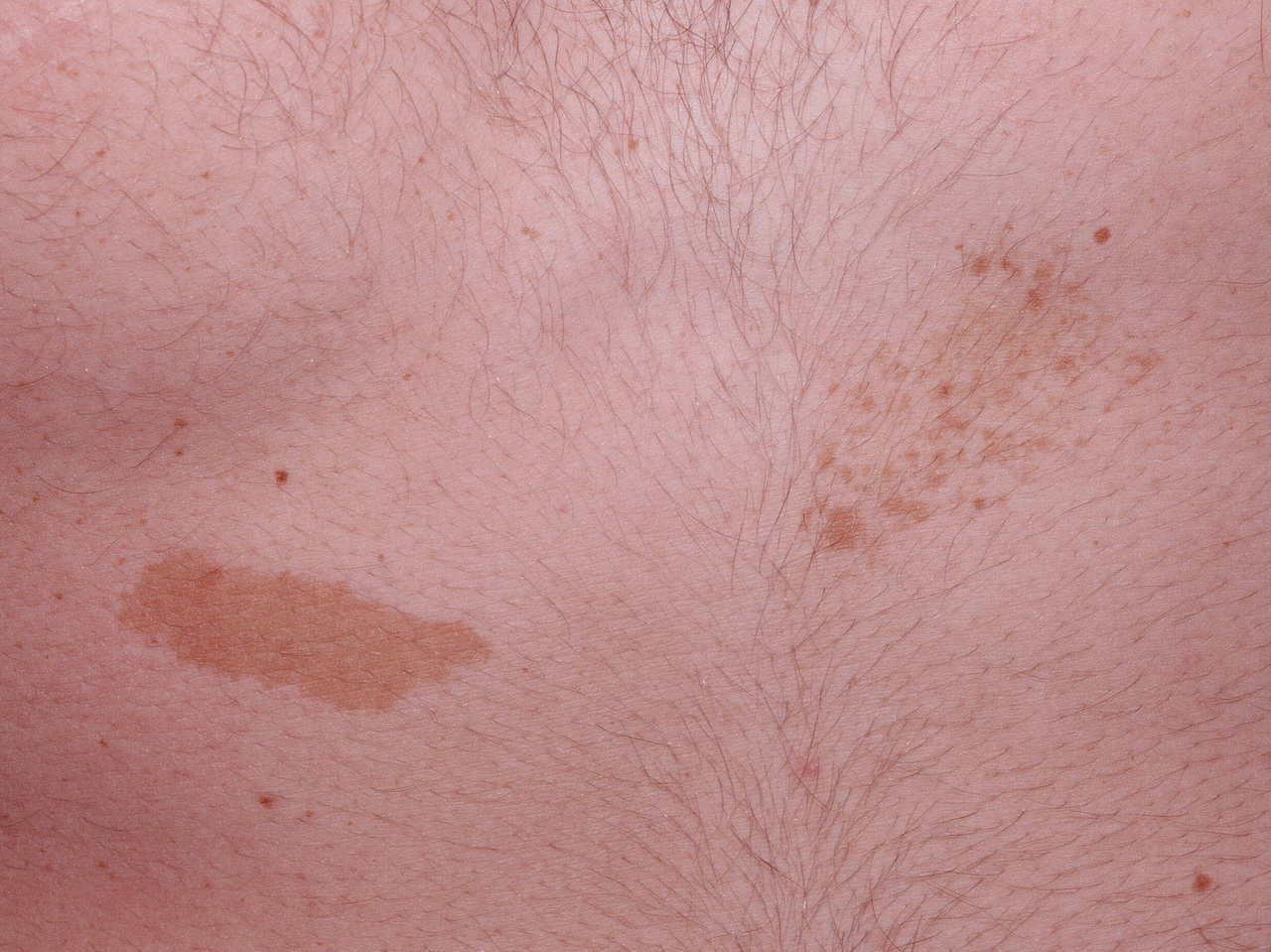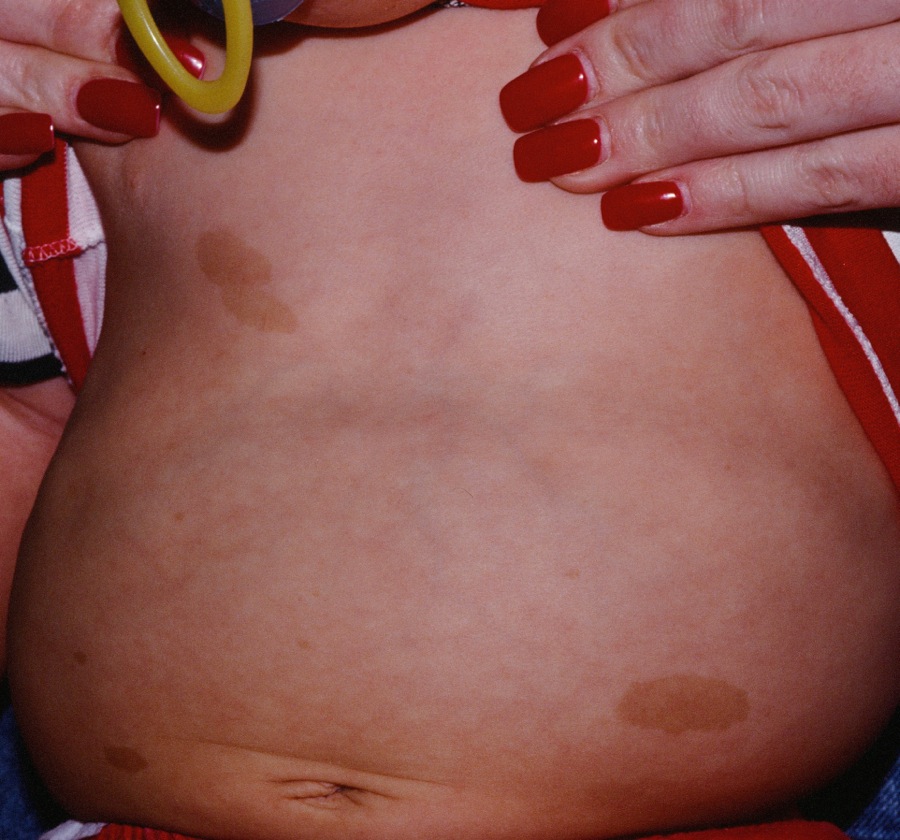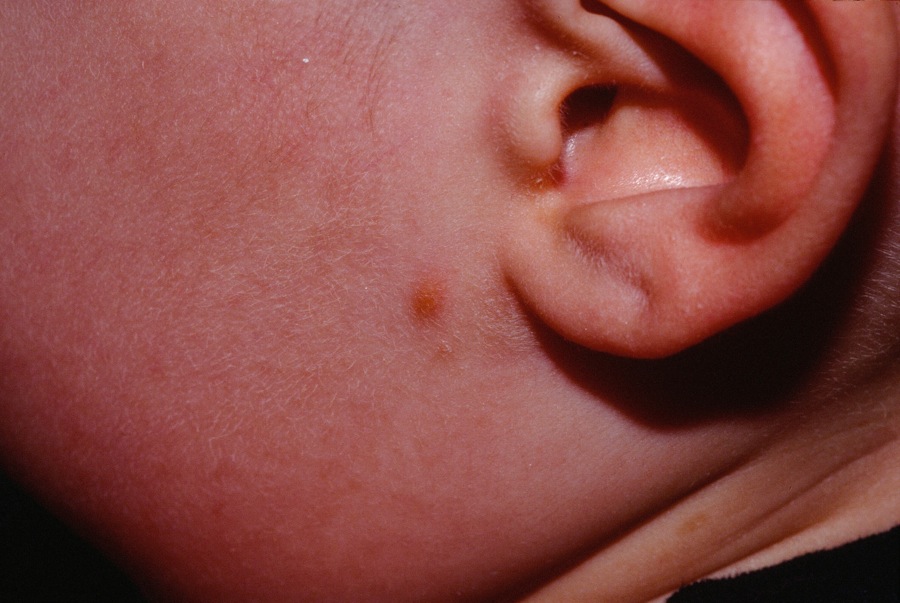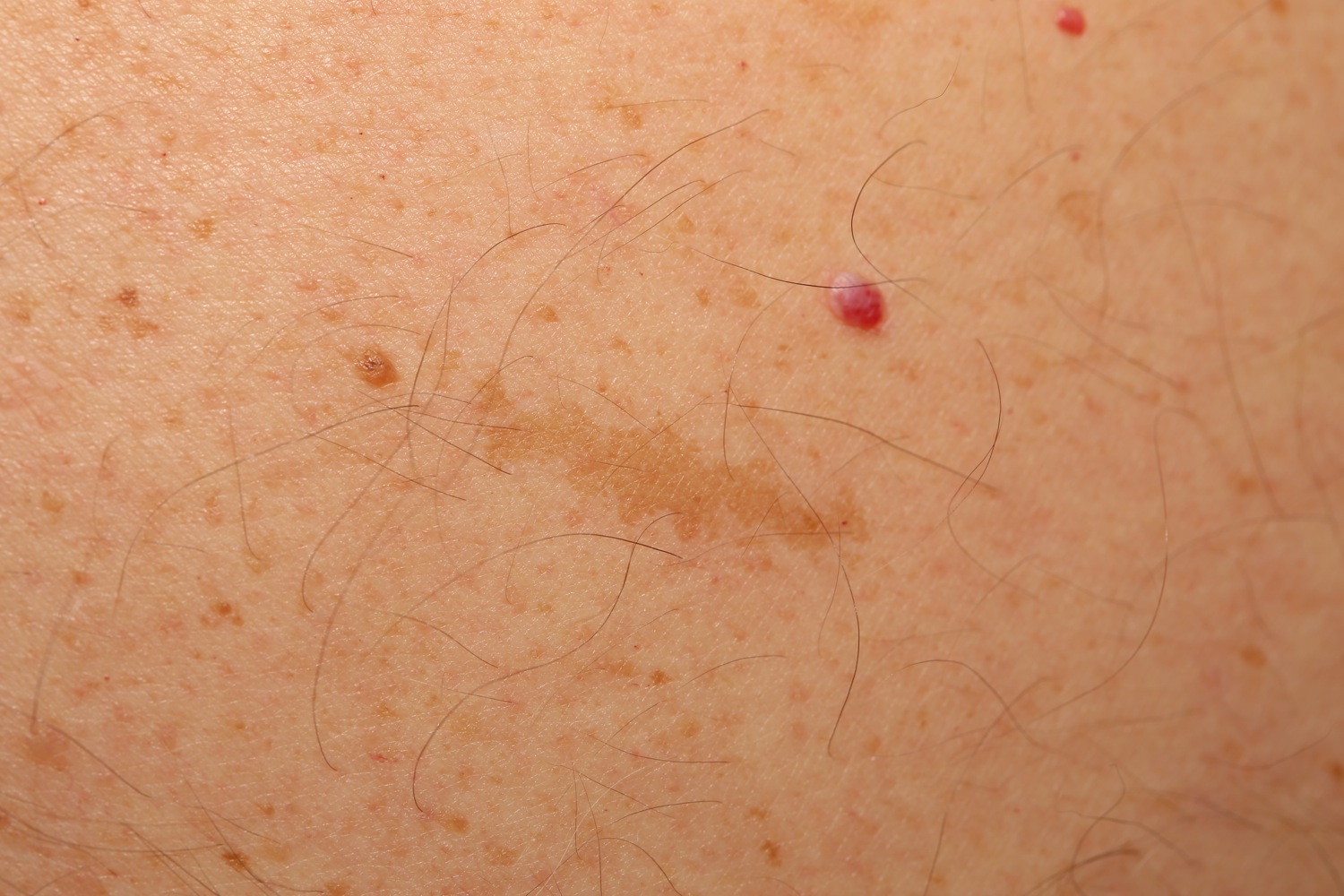
Multiple CALMs in a patient with neurofibromatosis.
CAFE AU LAIT MACULE
The cafe au lait macule (CALM) is a uniformly pigmented patch with onset at birth or early childhood.
- Solitary CALMs are common birthmarks and are found in 2.7% of normal neonates
- CALMs often develop in early childhood as well and about 28% in preschool-aged children have at least one.
- Multiple CALMs may be associated with neurofibromatosis, McCune-Albright Syndrome or Legius Syndrome
- The presence of 6 or more CALMs greater than 0.5 cm in prepubertal individuals (15 mm after puberty) is one diagnostic criteria for neurofibromatosis.
- It has been noted however that there are a subset of children, many with fair complexion and red or blond hair, that have an increased number of feathery CALM but are unlikely to develop NF-1.
Clinical
The CALM is a light tan or "coffee with milk" colored patch (color change only, not palpable) that is either congenital or noticed in early childhood. CALM may also be associated with juvenile xanthogranulomas
Typical vs. Atypical CALM
Some have defined two morphologies of CALM--typical and atypical. Typical CALM are ovoid in shape, with even borders, and uniform pigmentation and are more common in NF1. Atypical CALM have ragged/irregular borders and are irregular in shape. Patients with atypical CALM are less likely to develop NF-1 than those with typical CALM.

A cafe au lait macule to the left and a nevus spilus to the right.

Multiple CALM in a child with neurofibromatosis and juvenile xanthogranulomas.

JXG

A more subtle CALM with some cherry hemangiomas in an elderly man.
RegionalDerm
Homepage | Who is Dr. White? | Privacy Policy | FAQs | Use of Images | Contact Dr. White
It is not the intention of RegionalDerm.com to provide specific medical advice, diagnosis or treatment. RegionalDerm.com only intends to provide users with information regarding various medical conditions for educational purposes and will not provide specific medical advice. Information on RegionalDerm.com is not intended as a substitute for seeking medical treatment and you should always seek the advice of a qualified healthcare provider for diagnosis and for answers to your individual questions. Information contained on RegionalDerm.com should never cause you to disregard professional medical advice or delay seeking treatment. If you live in the United States and believe you are having a medical emergency call 911 immediately.




